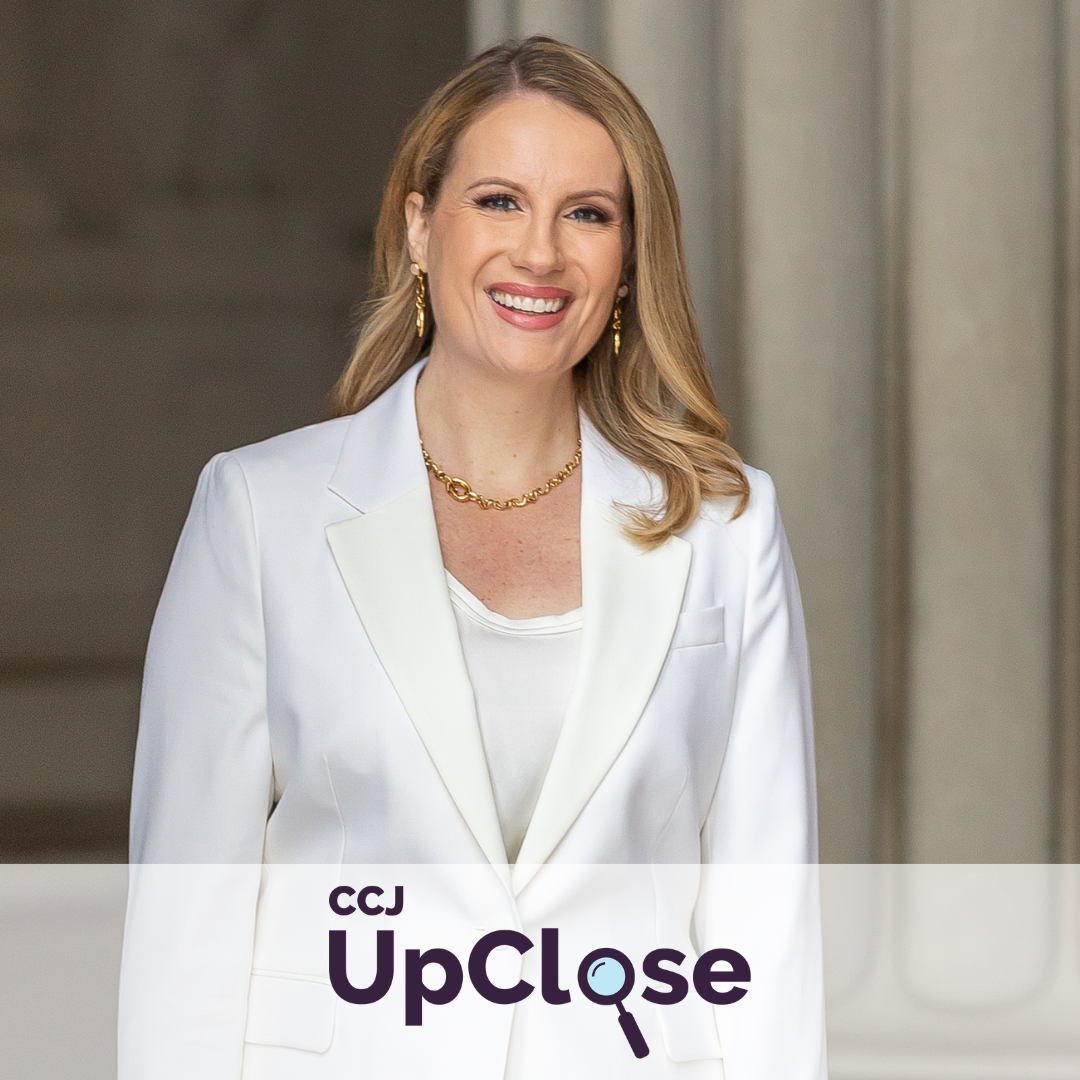Facing COVID-19, a series of Council on Criminal Justice web events, features leaders on the front lines of protecting public safety, public health, and justice as the criminal justice system responds to the coronavirus pandemic. Facing COVID-19 in the Courts took place on April 16, 2020.
Featured Speakers
Chief Justice Tani Cantil-Sakauye – California Supreme Court
Justice Michael Boggs – Georgia Supreme Court
Keir Bradford-Grey -Chief Defender, Defender Association of Philadelphia
Laurie Dudgeon – Director, Kentucky Administrative Office of the Courts
Melissa Nelson – State Attorney, Florida’s 4th Judicial Circuit
John Tilley (moderator) – CCJ Senior Fellow, attorney, five-term state legislator, and former Kentucky Justice Cabinet Secretary
Summary
Technology, especially the use of web-based video conferencing to conduct arraignments, bail hearings, and other urgent proceedings, has been a vital tool for courts during the time of COVID-19 and may reshape how judges, prosecutors, defense attorneys, and other justice professionals conduct business after the pandemic subsides.
That message was among many shared by panelists at a Council on Criminal Justice web event exploring how America’s courts are coping with new realities created by the deadly coronavirus. Speakers also discussed:
- emergency strategies for reducing incarcerated populations, including the elimination of cash bail for lower level cases and the expedited release of people nearing the end of their jail or prison term.
- the challenges of balancing access to justice with the need to protect the health of staff, attorneys, defendants, and the public in crowded courthouse settings.
- concerns that some jailed defendants are rushing to accept plea agreements because the threat of contracting COVID-19 behind bars makes them fear for their lives; and,
- the need for better real-time data to help officials more effectively manage operations during a crisis.
The web conference – CCJ’s second in a series highlighting impacts of COVID-19 on the criminal justice system – was held Thursday, April 16 and drew nearly 700 registrants.
Key Takeaways
Reducing Jail Populations to Protect Public Health
Armed with statutory powers or emergency orders issued by governors, officials are taking a wide variety of actions to thin incarcerated populations in hopes of containing the virus. Much of the action is focused on people in pretrial detention. In California, the Judicial Council temporarily eliminated cash bail for certain low-level offenses. In Kentucky, the jail population has dropped 36% because of declining arrests and an administrative release program for people held for nonviolent, low-level crimes. California also suspended jury trials for 60 days.
CANTIL-SAKAUYE: “We adopted zero bail for misdemeanors and low-level felonies partly because we were not getting enough information from the jails on whether they were exercising social distancing. Typically, sheriff’s deputies bring folks up [for court hearings] shackled and one foot apart, and place them in crowded rooms. We have a skeletal staff of judges and court staff and we were concerned about that interface.”
“Even though we’ve set a zero bail schedule, judges are still empowered to use their discretion to set conditions for release, to order appearances to pretrial services or probation, and to deny zero bail for good cause.”
NELSON: “Since March 22, we’ve reviewed over 5,500 nonviolent cases for expedited resolution and we’ve handled many of those through time served or other dispositions. We’re also identifying people nearing the end of their sentence who are medically vulnerable, and we’re working with the bench to initiate early release for them. Through this endeavor, we’ve reduced the jail population by 10%. And fortunately, we have not yet had a COVID-19 case in our jail.”
DUDGEON: “We’ve really tried to focus on our pretrial population, and our reduction has been driven partly by a huge drop in arrests. On average in Kentucky, we arrest 700 people per day. Now we are arresting about 175 people a day, about half for misdemeanors and half for felonies.”
BRADFORD-GREY: “We’ve been able to reduce our jail population through a number of avenues, by releasing people facing low-level bail and people who are in on technical violations of probation, meaning they did not commit new crimes but just failed to follow supervision rules. Since March 17, the Philadelphia jail population has been reduced by about 18%.”
BOGGS: “Our courts are looking very hard at who can be released so as not to affect public safety. But the real issue is not how many people you’re releasing from jail, it’s what are those releases allowing you to do in that facility. Does that release allow you to send home some of your non-essential staff, getting those folks out of that environment? Does it allow you to do medical quarantining in the jail?”
Technology in Court Operations May Be Here to Stay
Criminal justice systems in most states have long been struggling to make the transition from a paper world to a digital one, and COVID-19 is the uncomfortable nudge many courts needed to get over the hump. But not all stakeholders have the infrastructure and funding to function on equal footing, and concerns about the rights of defendants in web-based proceedings remain.
DUDGEON: “We had video arraignment technology in a number of our jails already, and now we have mandatory video conferencing for all emergency matters, like domestic violence, child support and custody orders, preliminary hearings, and probation violations. One disadvantage is that we had never really used the technology before so getting everyone trained and up to speed essentially overnight was critical.”
BRADFORD-GREY: “One challenge we’ve faced is that we haven’t yet had the structure and technology to hold hearings where we have the person accused and the victim in the same proceeding. In the future, we’re looking at using virtual hearings for many non-trial or non-advocacy types of appearances, to thin out how many people come into the criminal justice center. The problem is that in public defender offices across the country, the technology has never been as robust as that of other stakeholders. We need to make sure that we’re in line with others – and it’s going to be a challenge.”
BOGGS: “The technology challenges are very difficult and I don’t think anyone was quite ready. That said, the Georgia Supreme Court will be holding oral arguments via Zoom video, and under our Chief Justice’s emergency order, courts are moving toward more video conferencing for bail release decisions. Those get complicated, because we have a Victims Bill of Rights that requires notifications and we have constitutional obligations to keep courthouses open. But moving forward, video may well be an available remedy for individuals who are unable to make it to court.”
NELSON: “I think there’s a silver lining to the crisis, at least for operations. Necessity has forced our hand. Under our three-year strategic plan we wanted our office to be paperless by the end of next year, but we went paperless in three weeks because we had to learn how to work remotely. We are about to roll out a portal mechanism by which we will relay discovery. I think that, along with several virtual tools we’re using in the courts, will withstand this pandemic and be sustainable.”
Balancing Access to Justice, Protection of Public Health
COVID-19 has forced officials to make hard choices. How do they respect defendants’ rights to appear before a judge with counsel while also protecting their health, and that of judicial branch staff, through social distancing? In California, emergency orders extending deadlines for pretrial procedures such as arraignments and preliminary hearings have generated some pushback, because they allow defendants to be held in jail longer. Other states also are weathering such tensions.
CANTIL-SAKAUYE: “Our biggest concern is our in-custody defendants, because we need to balance their rights to justice with the need to protect their health. So while we extended the time periods [for pretrial proceedings], we directed the courts to act with great speed and we moved everything we possibly could to a remote proceeding to keep people safe. We will continue to tweak the rules as we learn of egregious applications, but I am hearing that everyone is acting with urgency and still trying to meet the statutory and constitutional requirements if they can.”
BRADFORD-GREY: “Even as we tried to thin the jail population to allow for social distancing, we were seeing new positive cases at a rate of 15 to 20 per day, and we just couldn’t contain it. So people were feeling the pressure to plead guilty to get out. We want to make sure they are accepting agreements on their own volition. Many may come back later and say they made these decisions under duress because they were not just incarcerated, but incarcerated with a deadly virus that could have infected them.”
BOGGS: “We have a lot of misdemeanants in our system who are entitled to bail but who have a bail set that they cannot afford. So courts in some of our larger jurisdictions are looking very hard at who can be released so as not to affect public safety. One challenge in Georgia is managing people’s expectations around what authority we actually have and what authority we don’t have. We cannot suspend compliance with state law or the Constitution. So we’re trying to balance all these issues and help our courts fashion remedies.”
Budget Constraints Loom
Shortfalls in state revenues, and competition among agencies for scarce dollars, will be a grim reality for states as they emerge from the pandemic. California, for instance, is facing multi-billion dollar deficits that far exceed reserves. Courts have always struggled to compete for adequate funding; it’s going to get worse.
DUDGEON: “One thing we’re all going to face is a very significant decline in state revenues for some time after this. We’re all anticipating it and we’re starting to prepare for budget reductions now. All this technology everyone has had to learn overnight will be a critical resource for us to use going forward to help save dollars. As a friend at the National Center for State Courts said, ‘This certainly isn’t the crisis that any of our courts wanted, but it may have been something that we needed if we were going to kick in this technology.’ ”
Victim Notification Changes
Amid the COVID-19 crisis, officials are striving to keep victims notified of pending releases and other phases of case processing. In some jurisdictions, the defense bar argues that those efforts are colliding with the rights of the accused.
NELSON: “As part of our initiative to expedite resolution of cases we have not agreed to disposition of a case or the release of an inmate without victim notification. That is constitutionally required in the state and we have abided by that obligation. In addition, we have just adopted an e-notification system that allows anyone interested in a particular case to be notified by text on the status of those cases.”
BRADFORD-GREY: “Victim notification for pretrial releases has been a source of controversy in Pennsylvania, because of questions over what constitutes a ‘victim’ when a person is not convicted yet. Our District Attorney is being courteous in notifying people of releases, but getting victims’ consent pretrial is not necessarily constitutionally mandated here, and we do need to remember that there is a constitutional right to be presumed innocent.”




